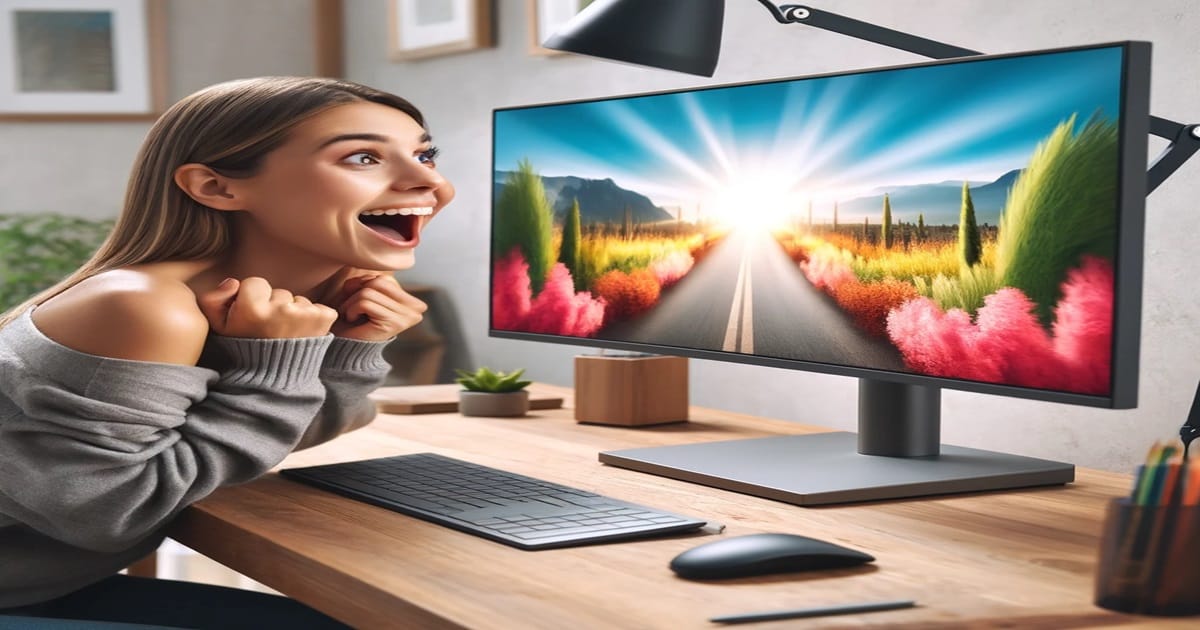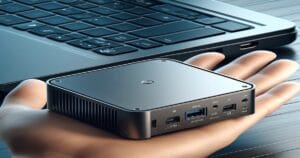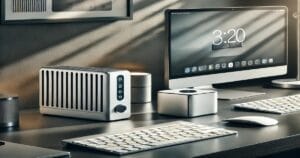Eye Care Technology: Reducing Strain for Extended Use
Extended screen time can cause eye strain and fatigue. Desktop monitors equipped with eye care technologies, such as flicker-free screens and blue light filters, can help reduce these effects. These features are especially important for those who spend long hours in front of a screen, ensuring a more comfortable viewing experience.
Testimonial: “Since switching to a desktop monitor with eye care features, my eyes feel much less strained after a long day of work.” – Mark R., Business Professional
Protect your eyes with advanced eye care technology.
Learn More
Eye Strain Reduction Techniques
| Technique | Description |
|---|---|
| Flicker-Free Technology | Eliminates screen flicker to reduce eye strain |
| Blue Light Filter | Reduces harmful blue light emission |
| Adjustable Brightness | Allows for optimal brightness levels |
| Anti-Glare Coating | Minimizes screen glare from ambient light |
Implementing eye care technology in your desktop monitor is a proactive step towards maintaining eye health. Blue light filters, for example, reduce the emission of blue light waves that can disrupt sleep patterns and cause digital eye strain. Flicker-free technology ensures that the monitor’s backlight does not flicker, which can cause headaches and eye strain over time.
The Importance of Taking Breaks
Even with the best eye care technology, it’s important to take regular breaks to prevent eye strain. The 20-20-20 rule is a good guideline to follow: every 20 minutes, take a 20-second break and look at something 20 feet away. This helps relax the muscles in your eyes and reduces fatigue.
Choosing the Right Eye Care Technology
When selecting a desktop monitor with eye care technology, consider features such as adjustable brightness and anti-glare coatings. These features can help reduce eye strain by allowing you to customize the monitor’s settings to suit your environment. Additionally, models with low blue light modes can help protect your eyes during extended use, particularly in low-light conditions.
Testimonials
“Eye care technology in my desktop monitor has made a noticeable difference in reducing my eye fatigue after long hours of work.” – Emily W., Writer
Additional Tips for Reducing Eye Strain
- Adjust Screen Brightness: Match the brightness of your monitor to the lighting in your room.
- Use Night Mode: Many monitors have a night mode that reduces blue light exposure in the evening.
- Maintain a Clean Screen: Dust and smudges can make it harder to see the screen, causing you to strain your eyes.
Connectivity Options: Versatility for Multiple Devices
A good desktop monitor should have a variety of connectivity options to ensure compatibility with different devices. Common ports include HDMI, DisplayPort, and USB-C. These options allow you to connect your desktop monitor to various devices, such as laptops, desktops, gaming consoles, and more, enhancing its versatility and functionality.
Discover desktop monitors with versatile connectivity options.
Connectivity Ports [H3]
| Port Type | Description |
|---|---|
| HDMI | Common for most devices, supports video and audio |
| DisplayPort | Ideal for high-resolution displays |
| USB-C | Versatile, supports data, video, and charging |
| VGA | Older standard, still used in some legacy devices |
When choosing a desktop monitor, it’s important to consider the connectivity options it offers. For instance, if you have a modern laptop, a USB-C port might be essential as it supports fast data transfer, video output, and charging all through a single cable. On the other hand, HDMI and DisplayPort are standard for connecting to most desktop computers and gaming consoles.
Expanding Your Workstation with Multiple Monitors
Using multiple desktop monitors can significantly increase your productivity by allowing you to multitask more effectively. For example, you can have your email open on one screen while working on a document on another. When setting up multiple desktop monitors, ensure that your primary screen is directly in front of you to avoid neck strain.
Future-Proofing Your Connectivity
As technology continues to evolve, it’s important to choose a desktop monitor with connectivity options that will remain relevant in the future. USB-C, for example, is becoming increasingly popular due to its versatility and ability to carry data, video, and power through a single cable. By selecting a desktop monitor with USB-C and other modern ports, you can ensure that your setup will remain compatible with new devices and technologies as they emerge.
Testimonials
“Having multiple connectivity options on my desktop monitor has made it so much easier to switch between my work laptop and gaming PC.” – Daniel S., Software Developer
Understanding Different Connectivity Options
- HDMI: High-Definition Multimedia Interface is the most common port and supports both video and audio.
- DisplayPort: Similar to HDMI but often preferred for high-resolution and high-refresh-rate displays.
- USB-C: A versatile port that supports data, video output, and charging, making it ideal for modern devices.
- VGA: An older standard still used in some legacy devices, primarily for video output.
Refresh Rate and Response Time: Smooth and Fluid Display
For gamers and video enthusiasts, a desktop monitor’s refresh rate and response time are critical factors. Higher refresh rates (such as 144Hz or 240Hz) and lower response times (measured in milliseconds) ensure smoother motion and reduce blur, providing a better experience for fast-paced games and action-packed videos.
Testimonial: “My gaming experience improved dramatically with a high refresh rate desktop monitor. Everything looks so smooth and responsive!” – John M., Gamer
Call to Action:
Enhance your gaming with a high refresh rate desktop monitor.
Explore Now
Refresh Rate Comparison [H3]
| Refresh Rate | Experience Level |
|---|---|
| 60Hz | Basic, suitable for general use |
| 75Hz | Slightly smoother, for casual gaming |
| 144Hz | Smooth, for serious gaming and video |
| 240Hz | Ultra-smooth, for competitive gaming |
Understanding Refresh Rates and Response Times
- Refresh Rate: The number of times per second a monitor updates the displayed image.
- Response Time: How quickly pixels can change color, affecting clarity during fast motion.
Gamers, in particular, will benefit from desktop monitors with higher refresh rates and lower response times, as these features can provide a competitive edge in fast-paced games by ensuring smoother and more responsive visuals.
Tips for Optimizing Your Gaming Setup
- Graphics Card Compatibility: Ensure your GPU can drive the high refresh rate you aim for.
- Monitor Settings: Enable FreeSync or G-Sync if supported, minimizing screen tearing.
- Ergonomics: Adjust monitor height and viewing angle for comfort during long sessions.
- Lighting: Use bias lighting behind the desktop monitor to reduce strain and glare.
Testimonials
“Switching to a high refresh rate desktop monitor has taken my gaming experience to the next level. The visuals are incredibly smooth.” – Jake L., Competitive Gamer
Conclusion: Finding the Perfect Desktop Monitor for Your Needs
Choosing the right desktop monitor can significantly enhance your visual viewing satisfaction. By considering factors such as resolution, color accuracy, HDR support, ergonomic design, eye care technology, connectivity options, and refresh rates, you can find a desktop monitor that meets your specific needs and preferences. Whether you’re a professional, a gamer, or a casual user, investing in a high-quality desktop monitor is essential for a superior viewing experience.
Browse top pick selections to find your perfect viewing match today.
Shop Now
Interesting Articles
For more information on related topics, check out our other blog posts:
10 Great Reasons for Mini PCs Today
Web Hosting Speeds Best Rates Today
Why Mind Blowing Speeds Matter in Web Hosting
Desktop Monitor Displays for Visual Viewing Satisfaction
Real Risks of Identity Theft: How to Protect Yourself
DDR4 vs DDR5 Mini PCs: Which Should You Choose in 2025
Mini PC vs Laptops: A Comprehensive Analysis
5 Reasons Why NordVPN Will Protect You
On the Go Productivity Portable Monitor Displays
DDR5 VS DDR4 Wikapedia





